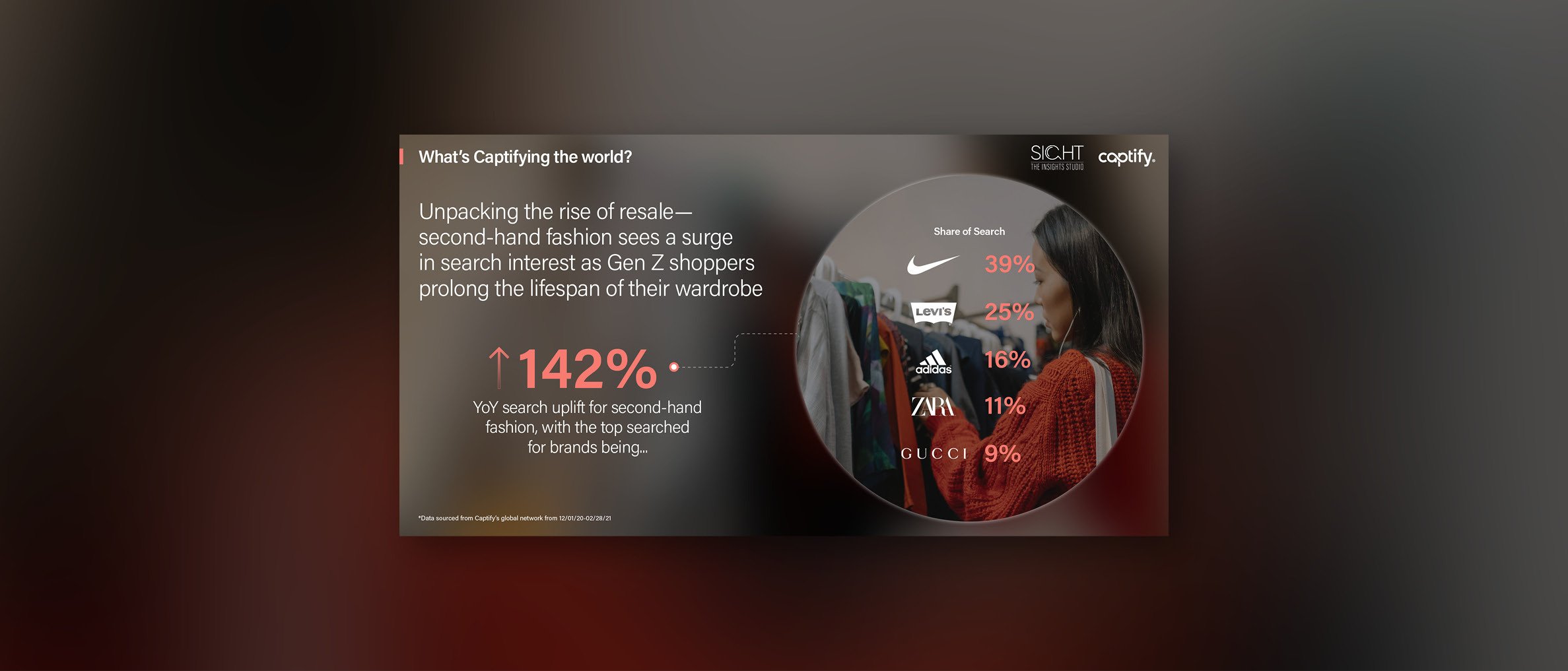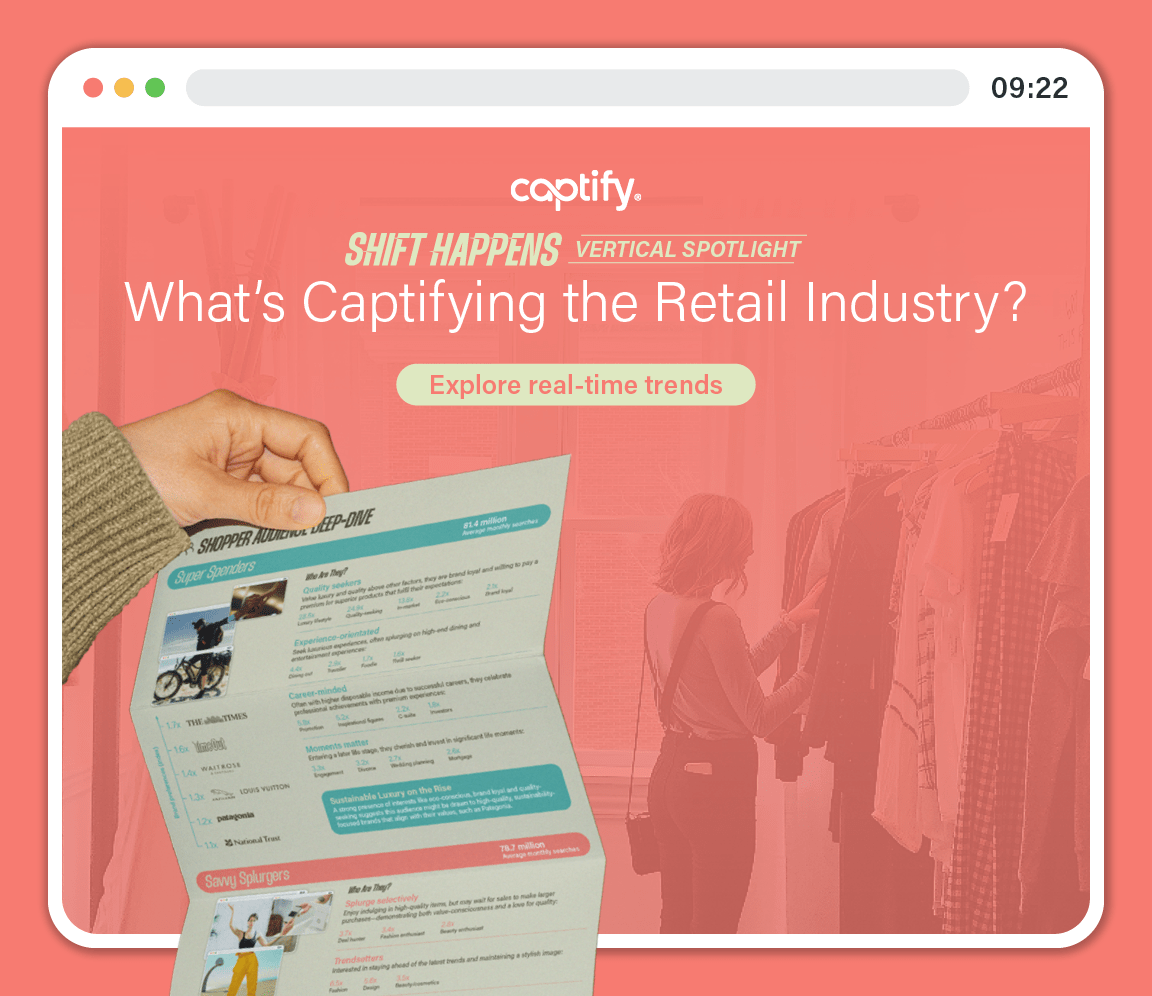What’s Captifying the World: Unpacking the rise of resale—second-hand fashion sees a surge in search interest, as Gen Z shoppers prolong the lifespan of their wardrobe
Forget fast fashion, it’s all about the rise of resale
The next generation of shoppers are discovering more frugal and mindful ways to shop, such as pre-loved and pre-owned fashion, a trend that has been further accelerated by life in a pandemic.
According to online consignment and thrift store thredUP, the second-hand fashion market is expected to reach $64 billion by 2024 and outpace fast fashion by 2029.
Reuse & repeat
Captify uncovered a 142% YoY search uplift for second-hand fashion and a 152% YoY uplift in audiences searching around this trend, with younger generations being the key driver of growth.
Gen Z is 30X more likely than any other audience to search around second-hand fashion to enhance their wardrobes in a more sustainable and cost-effective way.
Other emerging audiences include City Dwellers who might be looking to declutter and Bargain Hunters who are drawn in by the discounts and affordable nature of resale.
Prolonging pieces
Captify analyzed billions of searches from Dec 1 2020 to Feb 28 2021 to dive deeper into the triggers driving the rise in second-hand fashion searches.
Our platform uncovered that an increased focus on sustainability, affordability, and a greater demand for fashion that stands the test of time is driving interest.
Consumers searching around second-hand clothing are:
- 2.46X more likely to search around Durability—shoppers are looking to prolong the lifespan of their wardrobe to combat the negative environmental impact of over-consumption
- 1.57X more likely to search around Sustainability—a growing awareness around how pre-owned items can contribute towards a more sustainable future
- 1.43X more likely to search around price—with tightened budgets from the pandemic, second-hand goods allow shoppers to access higher-quality products that they might not otherwise be able to afford
Second-hand strategy for brands
Captify also analyzed which brands consumers are turning to for their second-hand fashion fix.
Brand share of search related to second-hand fashion:
- Nike—39%
- Levi’s—25%
- Adidas—16%
- Zara—11%
- Gucci—9%
Nike commands search interest, followed by Levi’s who launched a buy-back and resale program last year to reduce denim waste. Interestingly, fast fashion brands are also playing in the second-hand space, with Zara seeing 11% share of search.
Luxury brand Gucci also indexes in the top 5 brands, suggesting that younger shoppers are looking to access designer items at more accessible price points. Last year, Gucci partnered with The RealReal to launch an online shop featuring pre-loved items, showing how they’re moving towards a circular fashion economy.
The power of search data signals
Brands need to rely on fresh and dynamic data to monitor changes in purchase habits and to understand emerging audiences who are set to shape the market. This data can be used to influence their next marketing move and seize opportunities to conquesting competitors.
Get in touch to request a demo of Sense, Captify’s new Search Intent Platform where brands can discover critical consumer behaviors and insights, pinpoint the intent and size of audiences, and seamlessly activate programmatically across all channels—all powered by real-time intent.
*Data sourced from Captify’s global network from 12/01/20-02/28/21



